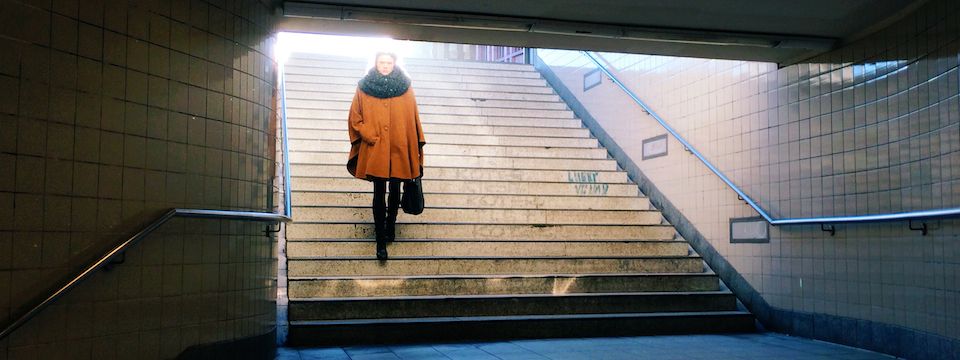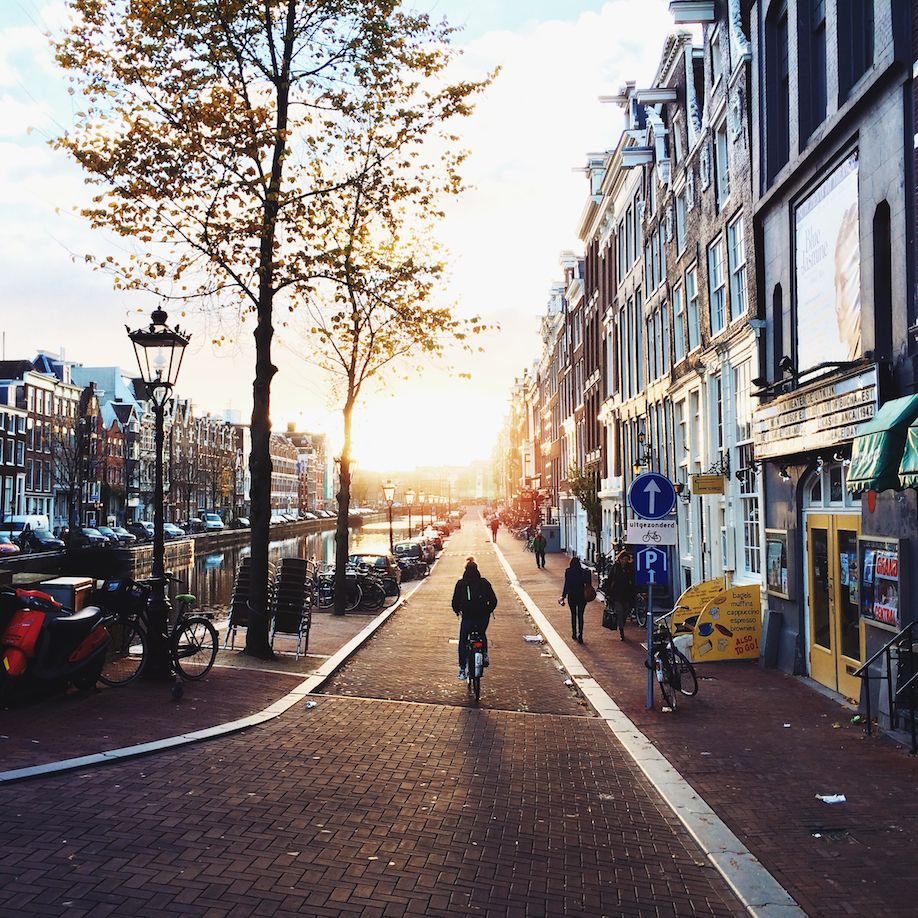Why “success” isn’t everything.
The number of followers of my account is a real eye catcher. I am often asked: How did you come by so many followers? I often respond that I have been with Instagram since its first week and in time you just collect followers. At parties this answer is usually more than sufficient, because often I have to start of with explaining what Instagram actually is. And the reply isn’t really wrong. But it doesn’t get to the heart of the matter. My friend Stephan (www.instagram.com/ryanm) showed me the app and became my first follower. Therefore he has been with Instagram even longer than I have. He has developed his own picture language. Something that’s typical for him are urban notices from Berlin: a street scene, Berlin at dawn, and plenty of impressions from the city’s clubs. He uses not only a smart phone, but also a pinhole camera. For this article, he has made a photo available to me which reminds me of his pinhole work. It was taken in Greece and alludes to the contrast between nature and culture (stairway). Have a look at his account some time.
Today Stephan has 1,300 followers. Does this mean that compared to me he was not successful? Who actually defines what “success” on Instagram means? Stephan has a smaller number of followers than I, but that’s only a factual difference. We have developed our accounts differently. I posted photos more often and more regularly than he did. This meant that I managed to get onto the Popular Page early, which in turn brought me new followers. I was also suggested by Instagram in an early phase of new users who then subscribed to my account. This ‘Suggest User List’ at the time was different to then one that has been established since August 2012. It was based to a large extent on the activity of the users – if you posted a lot, you were suggested to others. Stephan simply didn’t post as much.
Everyone manages their account differently. Beyond the picture language, which each account more or less represents, one can observe different posting strategies. My photos, even if they were not taken on that day, are definitely no older than one or two weeks. If occasionally this is not the case, I’ll identify it as such. I also point out if I haven’t used the iPhone but some other type of camera. Other users handle this differently: they post photos which are older, they edit them heavily and use high-quality cameras. Some users post a photo every three hours. Some post photos only to delete them later and then post them again. Why do they do that? To get a lot of followers? To get a lot of links? Maybe that’s their motive. But to understand why so many users are fascinated by Instagram and others are annoyed by it, we will have to take a closer look at Instagram.
Instagram offers us only very few functions: We can upload pictures and add filters, “like” pictures, and comment. Instagram is a program for smart phones with their small screens. This reduction in functions is certainly one of the reasons the app is so successful. More importantly, however, is that Instagram, despite the fact that it is easy to use, functions according to very complex mechanisms. If you are new to it, you are confronted with questions like: Why are some photos liked by so many others? Why do some users have so many followers even if their photos are not mind-blowing? Why do these photos then also receive enthusiastic comments, almost as if they had just re-invented photography? Maybe these questions can be answered by looking at Instagram as a photo-social game. This game is about dealing with photos, choice of motive, and posting strategy. Moreover, it is about communicating with your fellow players. And, finally, it is about figuring out the rules of this game.
In order to understand the playful interconnection between the social aspect and photography, we have to differentiate between two types of play: competition and randomness. First of all, Instagram does have elements of competition. That is to say that the person who has as many followers, likes, and comments as possible, is successful. Friends of mine told me of an Instagramer who is totally focused on overtaking others in terms of number of followers. That’s sheer competition!
The fact that Instagram is competitive can been deduced not least because of the innumerable offers to buy follower numbers. Wherever there is competition, there you will also find those who apply a creative interpretation to the rules of the competition. The distortions which go hand in hand with this – the three ‘currencies’ followers, likes, and comments, can become unbalanced – point to another element which is part of Instagram: The competitive game is also random. The rules how one acquires new followers or when a photo makes it to the Popular Page are not clearly spelled out. Instagram does explain how I can use the basic functions. However, the program gives hardly any advice on how I can be successful at this competitive game. For this reason, discussions among Instagramers often revolve around the question how to get onto the Popular Page or the Suggest User List. Whether a photo is “popular” depends on algorithms, created by the inventors of Instagram, which are constantly changed and adjusted. On the one hand this code is the online platform’s trade secret, and on the other hand it’s what makes the game so exciting. Instagram’s creators intensify this excitement by putting individual users on a “Dynamic Suggest List”. Officially, this list is supposed to serve as guidance for (new) users. The criteria on which the selection of suggested users and “popular” pictures is based, however, is a secret.
Instagram intervenes in the game in a regulatory way, and users have to deduce from clues how this intervention takes place and how to use it for their own advantage. At the same time, one could say that there are always distortions to the competition in this game through those who make the rules. Because random isn’t random, but a calculated, regulating intervention, the competitive game itself is distorted. This distortion makes it factually impossible to evaluate a player’s success in the competition from the outside: What do all those followers, likes, or comments of individual users actually mean? Are those user with the most fans also the most successful participants in the game?
Bex Finch, a New Yorker Instagramer (www.bexfinch.com), who accompanied me traveling through Israel for 10 days, and with whom I met up in Berlin a few weeks later, was often on the Suggest User List up until one and a half years ago. Since she is not longer recommended by Instagram, her follower numbers have stagnated. She provided the inspiration for the following picture in my series “First we take Manhattan, then we take Berlin”.
Bex and I have also talked about Instagram’s mysterious Suggest User List. She said that it was not important to her to be a suggested user. What matters to her is finding her own style and thereby delighting her followers.
Some Instagramer who had joined at the beginning now only rarely post their pictures there. Tilman is one of them. He is now more active on Flickr (http://www.flickr.com/photos/tilman/). We had a long discussion about Instagram and its workings when we met up. Tilman was of the opinion that it was not enough to only be active on one platform. One should not define oneself through only one network. Many Instagramers are active in other networks. At the same time, Instagram is the leading medium, because it has the most users worldwide among the mobile photo networks. However, I am active on several ones so that I am not dependent on only one social network. In doing so I am learning how the individual networks function. The same pictures receive a variety of reactions. The photo showing a reflection received more likes on Instagram than some of my other pictures (ca. 12,000), whereas on Facebook hardly anyone liked it.
Because every network is unique, I try out different types of picture languages. Photos which I post on Facebook or Twitter are often in landscape format. My black and white photos can often be found on EyeEm.
I find it very revealing that my pictures receive a variety of reactions on different networks, because it puts the success on Instagram into perspective and what remains crucial is the actual photography. Instagram is a game with photography.
Jörg Nicht
Jörg lives in Berlin and has been taking photos since he was 12. Now he has more than 270,000 followers on Instagram.
Instagram: www.instagram.com/jn
EyeEm: www.eyeem.com/jn_
Twitter: www.twitter.com/joergno
Tumblr: www.jnstagram.tumblr.com







